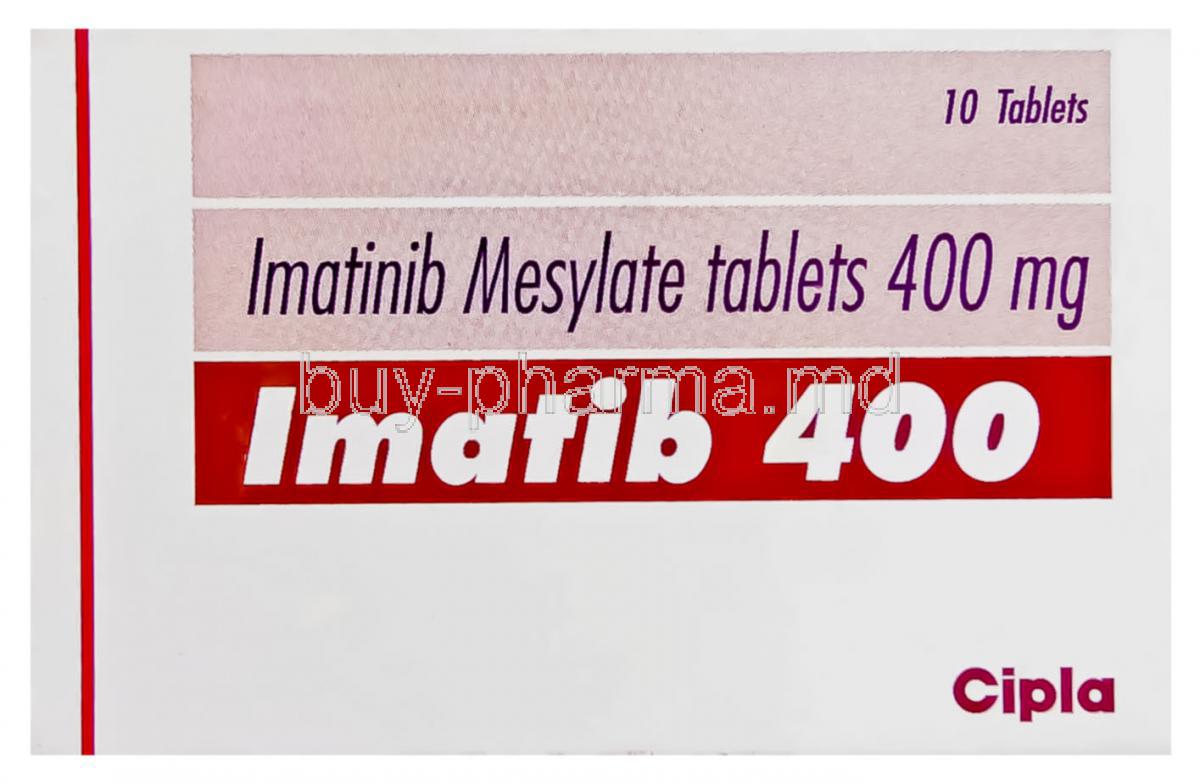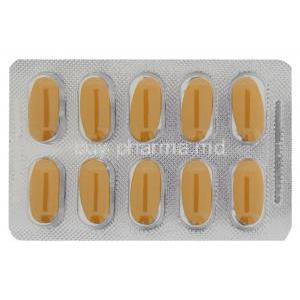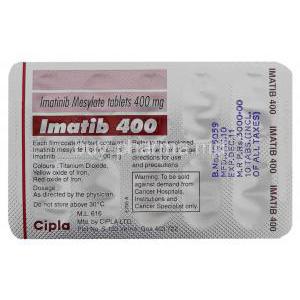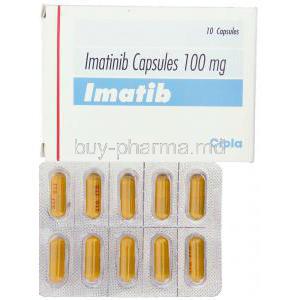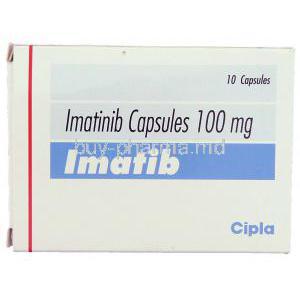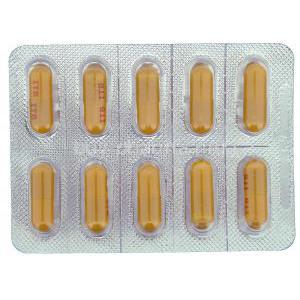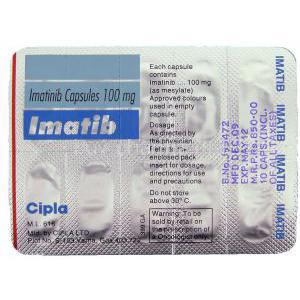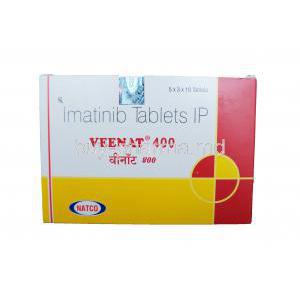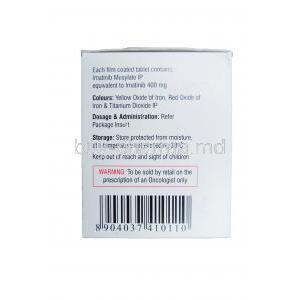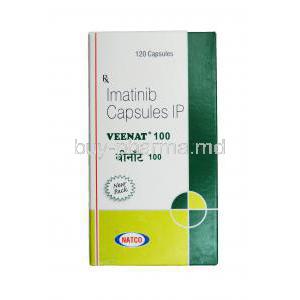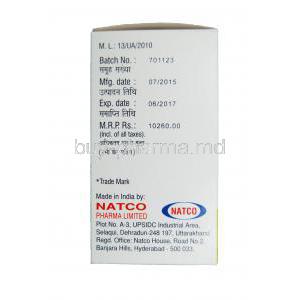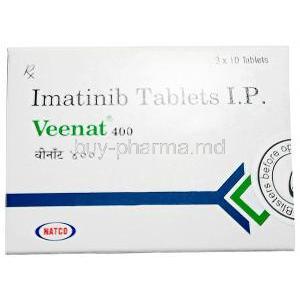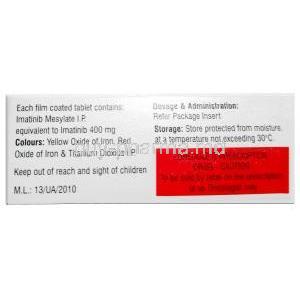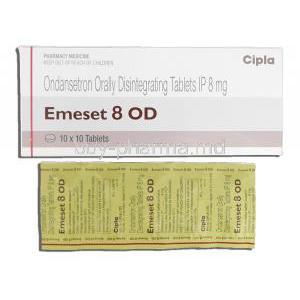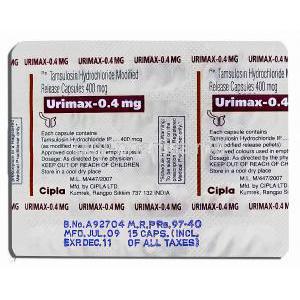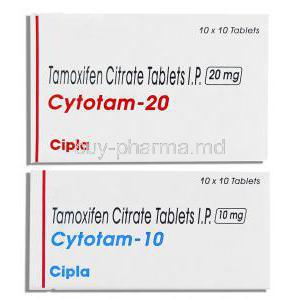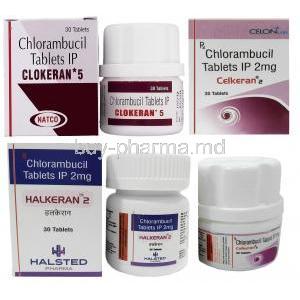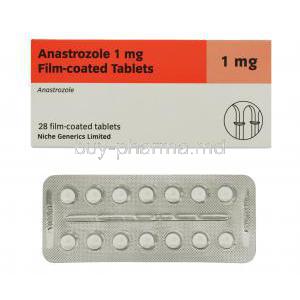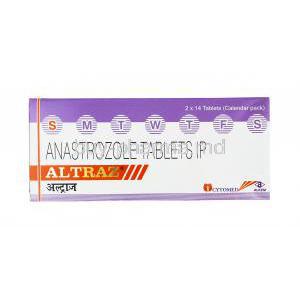Imatinib Mesylate
- Introduction to Imatinib
- Uses of Imatinib
- Off-Label Uses of Imatinib
- Understanding How Imatinib Works
- Composition of Imatinib
- Dosage and Administration
- Common and Rare Side Effects of Imatinib
- Drug Interactions with Imatinib
- Contraindications and Warnings
- Careful Administration and Important Precautions
- Administration in Specific Populations
- Handling Overdosage Situations
- Storage and Handling Precautions
Introduction to Imatinib
A. Discovery and development of Imatinib
In the field of oncology. Imatinib stands out as a beacon of hope with an exceptionally compelling origin story that highlights humanity's unyielding pursuit of progress and healing. Imatinib's roots go back to the late '90s when scientists at Ciba Geigy (now Novartis) led by Dr. Nicholas Lydon came together on a daunting quest - developing targeted cancer therapy capable of inhibiting Chronic Myelogenous Leukemia's tyrosine kinase enzyme BCR ABL. Years after their spirited efforts and unshakable perseverance, they created Imatinib - a potent inhibitor widely regarded as one of the oncologys' critical milestones. FDA eventually recognized the promising findings from clinical trials through accelerated approval granted in 2001; since then, it has become one of cancer medicines' most significant investments due to transformational impacts on therapeutic outcomes associated with some malignancies like CML.
B. Overview of Imatinib's purpose in medical treatment
To combat specific malignancies effectively while sparing healthy cells unharmed, Imatinib acts as a targeted therapy that disrupts cancer cell pathways. This powerful tyrosine kinase inhibitor selectively targets abnormal proteins responsible for cancer cell growth and survival.
- Imatinib's significant impact on treatment for Chronic Myelogenous Leukemia lies in its inhibition of the BCR ABL enzyme contributing to Philadelphia chromosome-positive disease proliferation.
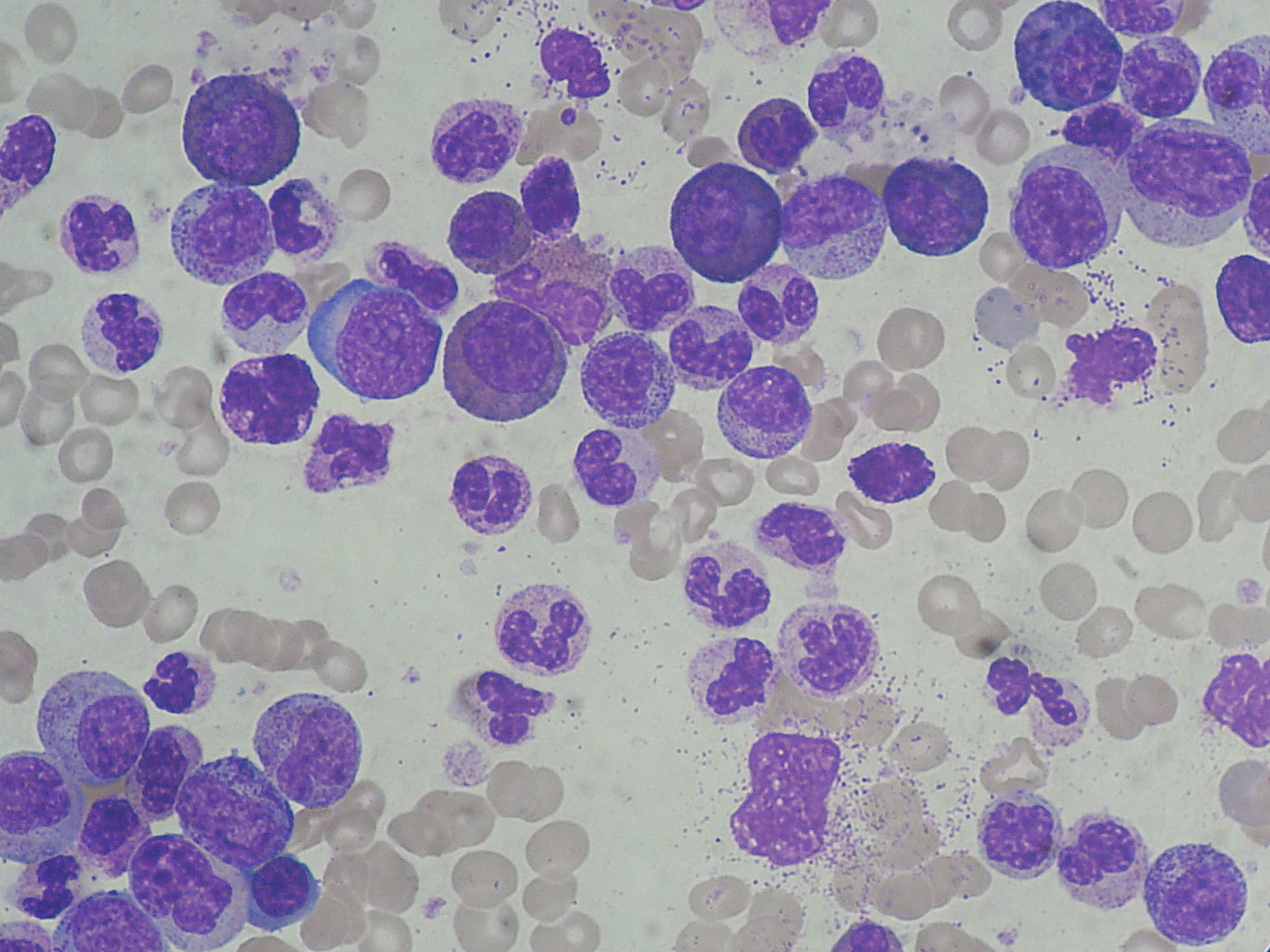
Chronic Myelogenous Leukemia Smear
- Similarly, targeting the KIT protein effectively treats Gastrointestinal Stromal Tumors (GIST).
- While mainly indicated for CML and GIST. Imatinib exhibits promise beyond these two conditions by treating Acute Lymphoblastic Leukemia (ALL).
- Myelodysplastic/Myeloproliferative Diseases and Systemic Mastocytosis under certain circumstances.
Imatinib represents a new era of personalized cancer treatment strategies using targeted therapies that exhibit reduced side effects compared to broad-spectrum cytotoxic chemotherapy. Embracing this future direction may herald continued advancements in oncology therapy development.
Uses of Imatinib
A. FDA-Approved Uses
With its robust ability to inhibit tyrosine kinase activity. Imatinib remains an instrumental tool in managing a range of health conditions. Approved by the United States Food and Drug Administration (FDA) for specific ailments. This medication demonstrates pivotal significance within the medical domain.
1. Chronic Myelogenous Leukemia (CML)
The advent of Imatinib has transformed how medical practitioners approach Chronic Myelogenous Leukemia (CML) treatment plans(1). With elevated risks from an unchecked proliferation of white blood cells within one's system leading to severe complications or even death, Imatinib's approval by the FDA marked a significant milestone for intervention. This medication is unrivaled in efficiency due to its mechanism of ionizing the culprit enzyme BCR ABL tyrosine kinase —known to fuel rapid cell multiplication. Consequently, imatinib diminishes CMLs effects. Culminating in real improvements in patient outcomes and survival rates. (2)
- How Gleevec Transformed Leukemia Treatment - NCI
- Chronic Myelogenous Leukemia (CML) - American Cancer Society
2. Gastrointestinal Stromal Tumors (GIST)
One cannot overstate how crucial it is to have medications like Imatinib available when dealing with challenging types of cancer, such as Gastrointestinal Stromal Tumors (GIST) (1). With their insidious proliferation patterns and a high potential for metastasis, these tumors demand a compelling therapeutic agent to halt their progress dead in its tracks. Fortunately, we have Imatinib - a potent treatment that zeros in on the mutated KIT proteins found within most cases of GIST to impede disease progression successfully. It's fair to say that by introducing this innovative mechanism into clinical practice. We've taken an enormous stride forward in managing these formidable cancers. (2)
1. Gastrointestinal Stromal Tumors Treatment - NCI
2. Imatinib Dosing in Gastrointestinal Stromal Tumors (GISTs): When, How Much, and How Long?
3. Other approved conditions
For individuals suffering from Acute Lymphoblastic Leukemia patient (ALL) a combined treatment approach incorporating Imatinib and chemotherapy significantly enhances treatment response rates(1). In particular. This combination therapy helps those diagnosed with the Philadelphia chromosome-positive ALL subtype. Myelodysplastic/Myeloproliferative Diseases encompass several disorders related to blood cell production abnormalities within the bone marrow that pose serious health consequences unless managed correctly, among certain subtypes of these conditions(2). Physicians approve and recommend the use of Imatinib for therapeutic intervention due to its effectiveness. At the same time, individuals with Systemic Mastocytosis condition can realize positive results when they receive Imatininb as part of their medical protocol, specifically if their condition involves a genetic mutation: D816V in the KIT gene.
B. The efficacy of Imatinib on different conditions
Extensive scientific studies provide a wealth of evidence supporting the efficacy of Imatinib that demonstrates its significant effect on patients' quality of life. This drug's unique ability to target multiple tyrosine kinases in various diseases distinguishes it as an exceptional pharmacological weapon. Notably, Imatinib significantly improves patient prognosis, particularly for those with CML, where many achieve molecular remission status. Similarly, encouraging outcomes are seen across different medical indications such as GIST, where patients can now live with this chronic illness by effectively managing it using this drug. Moreover, ongoing scientific research highlights novel applications beyond FDA-approved uses that promise to amplify imatinib therapeutic scope and its role in modern medicine. These findings identify hard-to-treat cancers and rare illnesses, demonstrating versatility unparalleled by other drugs currently available.
Off-Label Uses of Imatinib
A. Overview of Off-label uses
Imatinib has also shown promise as a Pulmonary Arterial Hypertension (PAH) treatment. The pathogenesis of PAH involves a proliferation of vascular smooth muscle cells, similar to the pathogenesis of cancers for which Imatinib is approved. Imatinib has shown promise in early studies for treating Neurofibromatosis. Studies suggest that Imatinib may have a role in certain eosinophilic disorders due to its inhibitory effect on PDGF (Platelet-Derived Growth Factor) as well.
B. Effectiveness and safety in off-label applications
With increasing use being discovered for Imatinib its imperative to examine both the drugs efficacy and safety when utilized off-label. While promising. It is still early days within this area; thus optimistic findings should be viewed with caution until further research validates them fully. Researchers conducting small scale trials report noticeable improvements in the functional capacity and pulmonary vascular resistance when using Imatinib amongst patients with PAH.This discovery showcases a possible treatment option though more extensive tests continue for neurofibromatosis and eosinophilic disorders. While generally safe when used as prescribed. Like any pharmacological agent. Imatinib carries some risks. Patients receiving treatment for PAH must be monitored closely since there have been reports of both fluid retention or anemia occurring during therapy sessions associated with this medication use.
C. Research findings on off-label use
The study into using Imatinib for off-label purposes has opened up an array of exciting possibilities that offer intriguing insights into the pharmacological abilities of this drug. A randomized controlled trial in the highly regarded New England Journal of Medicine(1) showed how effective Imatinib treatment was among severe PAH patients. As evidenced by their improved exercise capacity and pulmonary vascular resistance. Results from Phase II trials on neurofibromatosis patients offered a similar promise: some individuals reportedly experienced significant tumor shrinkage following their prescribed use of Imatinib. Further case studies and small trials into eosinophilic disorders have also indicated promising findings resonating with Imatinibs' broader, more comprehensive potential. However. As with any scientific venture. What we currently know is just a tiny fraction of what there remains to be discovered. With ongoing rigorous testing and exploration into these off-label avenues for Imatinib - only time will tell what else lies waiting to be uncovered.
1. Imatinib for the Treatment of Pulmonary Arterial Hypertension
Understanding How Imatinib Works
A. Mechanism of action of Imatinib
Imatinib is classified as targeted therapy since it is designed to interfere with specific proteins that promote the growth and survival of tumor cells. The drug acts by inhibiting several tyrosine kinases crucial for signaling pathways within cells. Its prime target in Chronic Myelogenous Leukemia (CML) is BCR ABL tyrosine kinase while KIT protein is targeted in Gastrointestinal Stromal Tumors (GIST). The end result of this inhibition is that cancerous cell proliferation slows down, allowing this drug to become a potent weapon used against both malignancies.(1)
1. How does Gleevec (imatinib) work? - Drugs.com
B. Role in cancer cell apoptosis
When it comes to fighting cancer, Imatinib offers a unique set of benefits that make it an invaluable tool in modern therapy. Its ability to inhibit both BCR ABL and KIT tyrosine kinases means it can disrupt key signaling pathways used by tumors to avoid programmed cell death via apoptosis, by doing so. Imatinib actively promotes cellular demise while halting tumor growth - a potent combination that considerably enhances its overall antitumor efficacy.
Composition of Imatinib
A. Chemical structure and components
A specific inhibitor of several tyrosine kinase enzymes, Imatinib is derived from the compound known as 2-phenyl amino pyrimidine. Its chemical denomination consists of: 4–[(methylpiperazyn–1–YL)metyl]-N-[metyl–3–[[pyridynil–3) (pyrymidynil)amino])-fenil)]” benzamide” (monomethansulphonate).
B. Formulations and available dosage forms
The ease with which Imatinib may be attained is due to its commercial availability as tablets designed for ingestion. These tablets come equipped with either 100mg or 400mg dosages, and must ideally accompany a meal alongside an ample quantity of water during oral administration. The faultless delivery of the drug's active substances is carried out through this formula, verified as being bioequivalent to the original brand product.
Dosage and Administration
A. Standard dosing guidelines
As with any medication regimen, Imatinib dosage must be taken according to individual medical needs. In treating Chronic Myeloid Leukemia (CML). Health professionals commonly recommend a range of 400 to 600mg per day for adults. At the same time, concentrations in addressing Gastrointestinal Stromal Tumors are typically higher, with a suggested dose between 400 and 800mg daily. Prescribing physicians must monitor each case carefully since optimal values rely heavily on personal factors such as medication tolerance levels and overall health conditions.
B. Adjustments for specific conditions
Individuals presenting signs of hepatic dysfunction ought to initiate Imatinib treatment at a lowered dosage level in light of the potential pitfalls associated with increased exposure to the medication. By extension, healthcare providers should closely monitor patients encountering adverse outcomes arising from drug use or have underlying kidney complications and take appropriate measures by adjusting doses accordingly.
C. Administration methods and timing
Imatinib tablets are best suited for oral consumption during mealtimes, with plenty of water to curtail gastrointestinal side effects. It is suggested not to take missed doses near the next-due intake time. Instead, proceed to take regularly scheduled dosages as prescribed by healthcare professionals.
Common and Rare Side Effects of Imatinib
A. Most frequent side effects
Imatinib may cause some common side effects such as fluid retention, nausea, muscle cramps, fatigue, and rash. These side effects are typically mild to moderate and can be managed with symptomatic treatment or dose adjustments. While these symptoms are usually not severe. They can be bothersome. However, symptomatic relief or dose modifications could help manage them. In most instances, these symptoms remain mild to moderate hence usually tolerable with caution. Remedial measures including symptomatic treatment or slight modification in doses can often provide relief from such complications.(1)
1. Imatinib Side Effects: Common, Severe, Long Term - Drugs.com
B. Less common, but severe side effects
Although uncommonly seen, it is worth mentioning that Imatinib has been recognized to produce detrimental side effects such as hepatitis toxicity, defiantly persistent fluid build-up in the body tissues (edema), gastric bleeding,and even heart dysfunction. Clinicians must pay particular attention to these infrequent occurrences,keep a close eye on affected individuals and responsibly adjust or discontinue the administration of the medication justifiably.
C. Managing side effects and symptom relief
Side effect management is a crucial component when undergoing Imatinib chemotherapy treatments. Dosage accuracy adjustments tailored to an individual patient's needs are an effective method for minimizing symptom onset or intensity levels related to medications such as Imatinib while receiving treatment courses overall as well as via ongoing symptom monitoring support interventions provided across routine clinician care encounters throughout your course experience will likely improve how well you proceed towards maximum benefit afforded by your current medical regimen and avoid possible complications induced from unexpected fluctuations related culminating over time between medication-induced intolerance levels across specific dosing ranges. With regular follow-up check-ins with your prescribing physician, you are taking an active role in achieving optimal treatment outcomes while minimizing side effects' experience and prevalence afforded by long-term cancer treatments.

Chemotherapy
Drug Interactions with Imatinib
A. Common drugs affecting Imatinib efficacy
Imatimab's potency is subject to important changes through drug interactions with other medications acting on similar metabolic pathways within patient physiology. Elevation pathways occur whenever the administration of powerful inhibitory enzymes (such as ketoconazole) occurs- an action increases toxicity and thus exposes the patient to adverse events. On the other hand, with potent enzymes such as rifampicin or St.John's Wort, there is decreased concentration of Imatinib plasma hence less therapeutic chemical, resulting in reduced therapeutic outcomes. Therefore, healthcare providers should extensively study the interaction between pharmacokinetics and physiology to manage combined medication administration better.
B. Potential food and supplement interactions
Taking Imatinib while consuming food promotes better absorption; hence ingestion at mealtimes is recommended. On the other hand, grapefruit or Grapefruit fruit or products containing grapefruit must not be taken with this drug since they can amplify its bioavailability and cause unwanted side effects in some individuals. Although research on how supplements interact with this medication needs further exploration, consulting one's healthcare provider before including new dietary additions during Imatinib treatment is strongly recommended.
Contraindications and Warnings
A. Situations where Imatinib use is not advised
It is not recommended for individuals who have exhibited hypersensitivity towards the constituents of Imatinib to take this medication. Further caution must be executed while using it in case of patients with existing liver, heart, or kidney ailments, as it can intensify these medical conditions.
B. Warnings for specific health conditions
Those who suffer from cardiac disease or have an elevated risk of cardiac failure must undergo thorough monitoring while undergoing Imatinib therapy. Patients with prior gastrointestinal conditions must also exercise caution when using this medication as there is a potential for gastrointestinal bleeding. Lastly, careful monitoring is necessary for individuals with immune system disorders due to the potential for immunosuppression.
Careful Administration and Important Precautions
A. Monitoring requirements during treatment
Imatinib treatment requires regular monitoring as a critical component of effective care. Monitoring helps healthcare providers gauge the medication's performance over time while tracking potential adverse effects. Routine testing may include blood workups, checks on liver function, and periodic cardiac evaluations.
B. Importance of regular health checks
To optimize safety and efficiency while undergoing treatment. Individuals must schedule consistent health assessments. These checkups enable healthcare professionals to detect and manage possible side effects proactively while simultaneously improving overall treatment outcomes. Furthermore, regular appointments present an opportunity for patients to consult their provider about modifying or adjusting their personalized care plans in response to changing needs.
C. Addressing medication non-adherence
Achieving desired health outcomes depends heavily on maintaining consistent medication adherence among patients. Identifying barriers faced by individuals and developing customized strategies for overcoming them is essential to improve this factor. The promotion of awareness regarding the importance of adhering to treatment protocols, along with effective supporting measures like simplifying doses or using reminder systems, would help further optimize adherence rates.
Administration in Specific Populations
A. Administration to the elderly
When prescribing Imatinib to elderly patients, healthcare providers must take care to consider the potential for heightened side effects. To mitigate these risks, it may be necessary to modify treatment dosage and regularly monitor patients' health status.
B. Administration to pregnant women and nursing mothers
The potential for harm posed by Imatinib necessitates extreme caution when considering its use among pregnant women and nursing mothers alike, as such. Medical practitioners must advise their patients accordingly and avoid prescribing it when there are alternative options available until conclusive research has made apparent any possible effects on fetuses and newborns receiving breastmilk.
C. Administration to children
Due to successful establishment in previous trials Imatinib can be deemed both efficient and reliable when used for pediatric patients. Nevertheless close observation of possible side effects as well as adjustment of the prescribed dose according to individual weight needs should be prioritized in order to ensure optimal results for this group.
Handling Overdosage Situations
A. Identifying signs of Imatinib overdose
Signs indicating an overdose of Imatinib must be taken seriously and responded to promptly. Such indications could materialize in many ways- for instance, through severe gastrointestinal disturbances; heightened liver enzyme levels; or both skin rash and muscle soreness simultaneously. Further, adverse effects could increase in severity presenting risks such as renal failure or cardiac complications.
B. Immediate steps and medical interventions
Prompt medical intervention ought to be sought whenever one suspects an Imatinib overdose condition. The means to manage this type of emergency involves utilizing general supportive techniques and offering symptomatic therapy as required. So far, no known antidote can effectively tackle an Imatinib overdose episode.
Storage and Handling Precautions
A. Ideal storage conditions for Imatinib
To ensure safe use. It is important to store Imatinib in a room-temperature environment that is free of moisture and light. Moreover keeping it out of access by children and pets can prevent any unintentional consumption.
B. Handling precautions and safety measures
It is important to note that Imatinib tablets should not be crushed or broken as it may result in unintentional effects. Moreover. In the event of contact with your skin or eyes. It is advisable to avoid such situations and promptly wash the affected area with soap and water. Additionally. Always ensure that you handle Imatinib tablets using clean and dry hands. For hygiene purposes.

